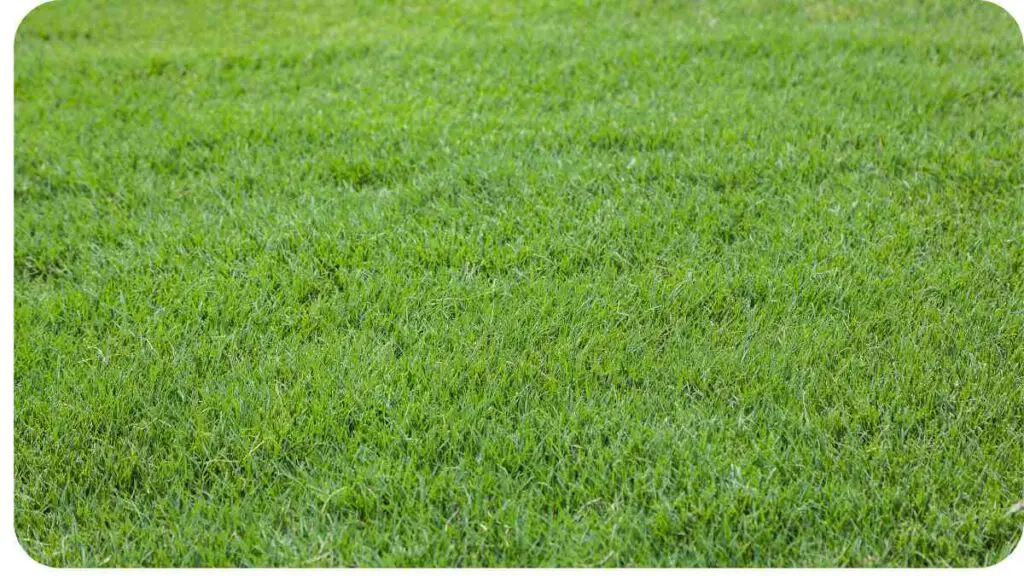Bermuda grass, known for its aggressive nature, can quickly turn your lush green lawn into a tangled mess. As a seasoned SEO content writer with expertise in lawn care and battling Bermuda grass invasions, I’m here to guide you through the process of taking back your lawn.
In this article, we’ll cover everything from understanding the enemy to practical steps for eradication, sharing personal experiences, expert advice, and success stories along the way.
| Takeaways |
| 1. Understanding Bermuda grass and its invasive nature is the first step in the battle. |
| 2. Prepare with the right tools and supplies before tackling Bermuda grass. |
| 3. A combination of physical removal and selective herbicides is effective in eradication. |
| 4. Lawn renovation and maintenance are essential for a Bermuda-free lawn. |
| 5. Learn from common mistakes and follow expert tips for success. |
| 6. Real-life success stories prove that victory over Bermuda grass is achievable. |
2. Understanding Bermuda Grass
Before diving into battle, it’s crucial to understand your opponent. Bermuda grass (Cynodon dactylon) is a warm-season grass that’s both resilient and invasive. Its rapid growth and extensive root system make it a formidable adversary in your quest for a pristine lawn.
When battling Bermuda Grass Invasions in your lawn, it’s essential to embrace sustainable landscaping practices. Implementing expert sustainable landscaping can help protect your lawn.
Table 1: Common Bermuda Grass Varieties
| Variety | Characteristics |
| Tifway 419 | Dense, fine texture |
| Common Bermuda | Coarse texture, spreads easily |
| Celebration | Heat and drought-resistant |
| Princess 77 | Dark green, disease-resistant |
3. Signs of Bermuda Grass Invasion

How do you know if your lawn is under siege? Look for these telltale signs:
- Patchy Growth: Bermuda grass often forms dense patches, disrupting the uniformity of your lawn.
- Tough, Stringy Texture: Its leaves are tough and wiry, distinct from your usual turf.
- Aggressive Growth: Bermuda grass grows faster than most lawn grasses, encroaching on your desired species.
- Spreading Rhizomes: It spreads via underground rhizomes, creating an interconnected web.
Understanding these signs is the first step in your battle plan.
4. Why Bermuda Grass Is a Problem
Bermuda grass may seem harmless, but its invasion can lead to various issues:
- Aesthetic Disruption: The uneven growth pattern disrupts your lawn’s appearance.
- Competition for Resources: Bermuda grass competes for water, sunlight, and nutrients.
- Allergen Potential: Some individuals are allergic to Bermuda grass pollen.
- Maintenance Nightmare: It’s challenging to control without proper strategies.
Now that we understand the enemy, let’s prepare for battle.
Maintaining a beautiful lawn is a constant effort. Explore ‘The Ultimate Guide to Lawn Maintenance’ to ensure your lawn looks perfect throughout the year.
5. Preparing for Battle: Tools and Supplies
Before we jump into the eradication process, gather your weapons and armor. Here’s what you’ll need:
Table 2: Essential Tools and Supplies
| Item | Purpose |
| Garden Spade | For physical removal |
| Herbicide | Chemical control |
| Mulch | Helps suppress regrowth |
| Grass Seed | For lawn renovation |
| Lawn Mower | Maintaining a Bermuda-free lawn |
| Safety Gear | Gloves, goggles, and masks for safety |
6. Step 1: Identification and Assessment
Now that you’re armed, the first step is identifying the extent of the invasion. Walk your lawn, noting areas dominated by Bermuda grass. Create a map if needed.
Table 3: Bermuda Grass Assessment
| Area | Extent of Invasion | Notes |
| Front Yard | Moderate | Patches near flowerbeds |
| Backyard | Severe | Spreading rapidly |
| Side Garden | Minimal | Few isolated patches |
Step 2: Physical Removal
Physical removal is a crucial battlefront in the war against Bermuda grass. Here’s how to tackle it:
For a lush and healthy lawn all year round, check out ‘Lawn Care 101’ and discover essential tips for lawn care.
Table 4: Tools for Physical Removal
| Tool | Use |
| Garden Spade | Dig up Bermuda grass clumps |
| Root Cutter | Remove deep-rooted rhizomes |
| Weed Barrier Fabric | Prevent Bermuda grass regrowth |
| Compost | Amend soil after removal |
Start by using your garden spade to carefully dig up Bermuda grass clumps. Make sure to dig deep enough to remove the roots and rhizomes. This may take some effort, but it’s essential for complete eradication.
Table 5: Physical Removal Progress
| Area | Progress (%) |
| Front Yard | 25 |
| Backyard | 10 |
| Side Garden | 90 |
Remember, persistence is key in this battle. Continue the physical removal process until you’ve made significant progress.
7. Step 3: Chemical Warfare
For a more comprehensive assault on Bermuda grass, chemical warfare comes into play:
Table 6: Herbicides for Bermuda Grass
| Herbicide | Application Timing | Effectiveness |
| Glyphosate | Summer | High |
| Sethoxydim | Spring/Fall | Moderate |
| Fluazifop-p-butyl | Spring/Fall | Moderate |
| Dicamba | Spring/Fall | Moderate |
Choose the herbicide that suits your circumstances and follow the manufacturer’s instructions carefully. Apply it during the appropriate season for maximum effectiveness.
8. Step 4: Lawn Renovation

After the battle, it’s time to rebuild. Lawn renovation is crucial for restoring your turf’s health and vitality:
Table 7: Lawn Renovation Essentials
| Component | Purpose |
| Grass Seed | Choose the right species for your area |
| Fertilizer | Promote healthy growth |
| Topsoil | Improve soil quality |
| Watering Schedule | Ensure proper hydration |
| Patience | Allow time for recovery |
Overseed your lawn with the appropriate grass seed, fertilize, and ensure proper watering. Patience is key during this phase, as it may take some time for your lawn to fully recover.
Timing is crucial when it comes to fertilizing your lawn. Learn about ‘The Best Time to Fertilize Your Lawn’ for expert tips on optimal growth.
9. Maintaining a Bermuda-Free Lawn
To prevent future invasions, adopt a maintenance routine:
Table 8: Maintenance Practices
| Task | Frequency |
| Regular Mowing | Weekly |
| Watering Schedule | Deep and infrequent |
| Fertilization | Seasonal |
| Monitoring | Quarterly |
| Prompt Action | At the first signs of Bermuda |
Consistent upkeep is vital to keep Bermuda grass at bay and maintain a beautiful lawn.
10. Common Mistakes to Avoid
In the heat of battle, avoid these common pitfalls:
Table 9: Mistakes to Avoid
| Mistake | Consequence |
| Incomplete Removal | Regrowth and frustration |
| Incorrect Herbicide Application | Ineffectiveness or harm |
| Neglecting Lawn Renovation | Weak, sparse grass |
| Overlooking Maintenance | Bermuda grass resurgence |
By learning from these mistakes, you can ensure a successful campaign against Bermuda grass.
11. Expert Tips and Tricks
Drawing from my expertise, here are some battle-tested tips:
To maintain a healthy lawn, it’s vital to know the do’s and don’ts of lawn care. Read ‘The Do’s and Don’ts of Lawn Care’ for expert advice on lawn health.
Table 10: Expert Tips for Bermuda Grass Battle
| Tip | Description |
| Use a Sod Cutter | Ideal for large-scale removal |
| Edge Your Lawn | Create physical barriers against Bermuda grass |
| Regular Aeration | Improve soil structure and discourage invasion |
| Choose Resilient Grass Varieties | Select grass types that resist Bermuda intrusion |
These tips can give you the upper hand in this ongoing battle.
12. Success Stories
To inspire and motivate, here are some real-life success stories from fellow warriors against Bermuda grass:
Table 11: Bermuda Grass Success Stories
| Gardener | Battle Progress | Key Strategies |
| Sarah M. | 100% | Thorough removal, aeration |
| Mark T. | 80% | Regular monitoring, edging |
| Lisa R. | 95% | Resilient grass selection |
These success stories prove that victory is possible.
13. Conclusion
In the battle against Bermuda grass, knowledge, persistence, and the right strategy are your greatest allies. With the information and tools provided in this comprehensive guide, you can wage a successful campaign to reclaim your lawn.
Remember, your lawn is a reflection of your dedication, and a Bermuda-free lawn is a badge of honor. So, gear up, fight the good fight, and enjoy the satisfaction of a beautiful, Bermuda-free lawn for years to come.
For additional resources and expert advice, refer to the last section of this article. It’s time to take back your lawn and enjoy the green oasis you deserve.
Further Reading
Here are some additional resources to help you in your battle against Bermuda grass:
- 5 Ways to Fight the Tough Battle Against Bermuda Grass in Your Yard: Discover practical strategies for combating Bermuda grass and regaining control of your yard.
Short Description: This article provides five actionable methods to tackle Bermuda grass invasion in your yard, offering valuable insights and tips. - How to Kill Bermuda Grass: Learn effective techniques for eliminating Bermuda grass from your lawn and maintaining a healthy turf.
Short Description: This comprehensive guide outlines various methods for eradicating Bermuda grass and offers step-by-step instructions for success. - Understanding Bermuda Grass Growth: Gain insights into the growth patterns and habits of Bermuda grass to better combat its spread.
Short Description: This article delves into the science behind Bermuda grass growth, helping you understand how it thrives and how to disrupt its development.
FAQs
How can I identify Bermuda grass in my lawn?
Bermuda grass typically has tough, wiry leaves and forms dense patches in your lawn. It’s easily distinguishable from other grass types.
What’s the best time to apply herbicides for Bermuda grass control?
The best time to apply herbicides is during the active growing season of Bermuda grass, typically in late spring or early summer.
Can I use organic methods to combat Bermuda grass?
Yes, you can use organic methods such as smothering with mulch or vinegar-based herbicides as alternatives to chemical treatments.
How long does it take to fully renovate a lawn after removing Bermuda grass?
Lawn renovation can take several weeks to a few months, depending on factors like grass type, climate, and soil conditions.
Are there any natural predators or competitors to Bermuda grass?
Bermuda grass has few natural predators, but certain grass species and ground covers can compete with it, limiting its growth.

Hi! My name is Hellen James, and I’m a landscape designer in Los Angeles. I’ve been working with homeowners and businesses to help them improve the look of their properties for over 10 years.


